Persicaria varieties: 16 stunning varieties for colorful borders
Our favorite persicaria varieties will add easy color and informal style to your planting scheme


If you like fuss-free tough plants that flower for months, there are so many persicaria varieties that should be on your shopping list.
Also known as knotweed and bistort, they produce airy tapers of crimson, raspberry, pastel pink, or ivory flowers, adding color and informal style to borders and providing bees with nectar.
These stalwart perennials are one of the best ground cover plants, and can bloom from mid summer into mid fall, providing attractive foliage that can take on fiery tints in the fall.
However, it’s crucial to select the right type of persicaria! Upon reading the word knotweed, most gardeners will reel, thinking of the infamous Japanese knotweed (Fallopia japonica), which, indeed, used to be grouped within the same genus (before being recategorized).
And it’s true that some species of persicaria, including P. wallichii and P. runcinata, can spread at an alarming rate and ought to be avoided. But pick the right forms of persicaria and it’s a joy.
16 persicaria varieties to grow in your garden
The best persicaria varieties are hardy long-flowering perennials that deserve a place in every garden border. Plant the most garden-worthy varieties of knotweed and bistort now for a riot of color in late summer and fall.
1. Persicaria amplexicaulis ‘Blackfield'
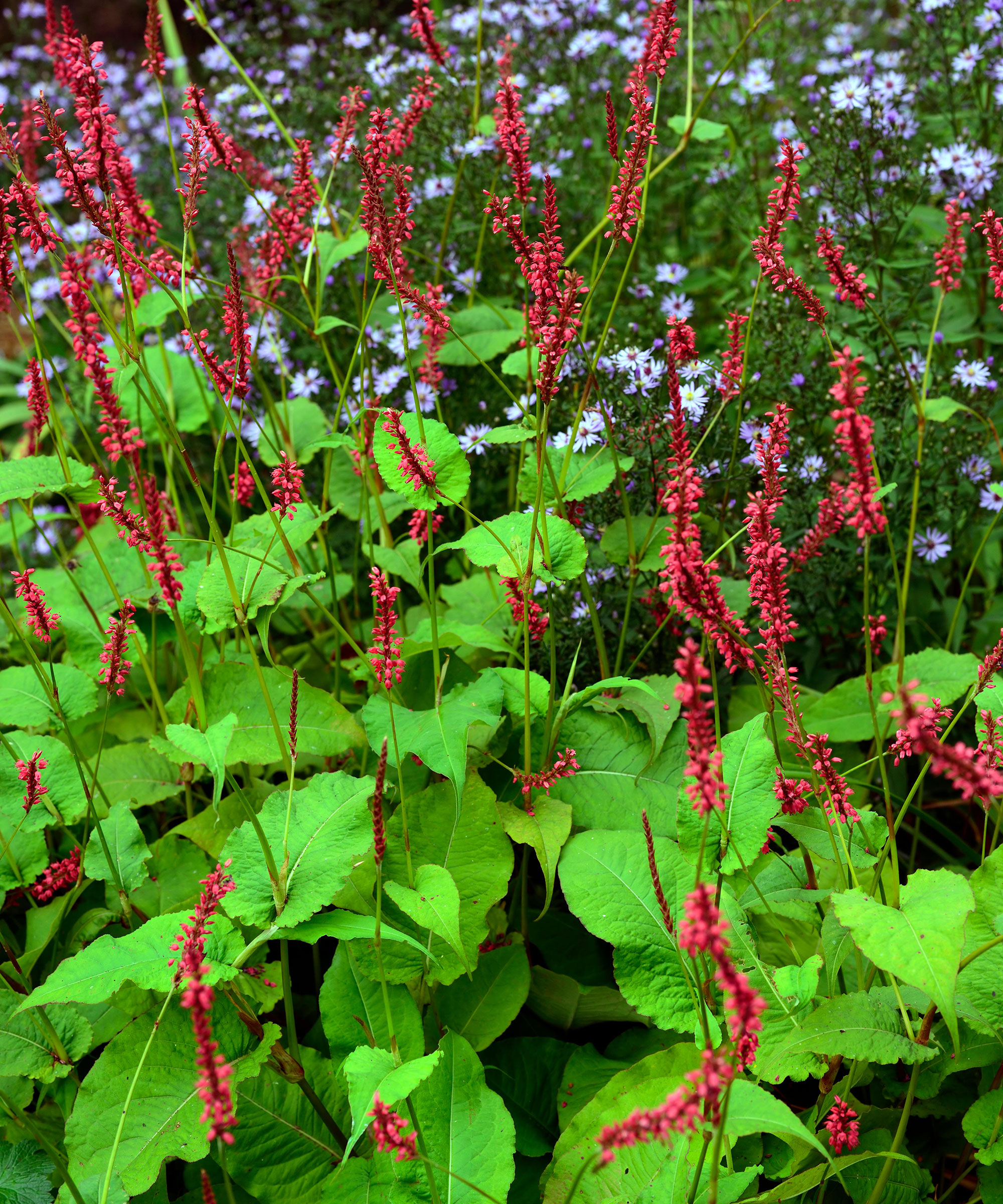
- Hardiness: USDA 4-7 (UK H7)
- Height: 3ft (90cm)
- Spread: 3ft (90cm)
- Best for: Bees
Pokers of ruby flowers open from dark-claret buds in late summer and early fall, above heart-shaped green leaves.
Like all forms of P. amplexicaulis, this is best in retentive soil types, but copes with most soils in sun or semi-shade.
Pair it with pale-pink Symphyotrichum 'Coombe Fishacre’ for a pretty planting partner.
2. Persicaria amplexicaulis 'Fat Domino’
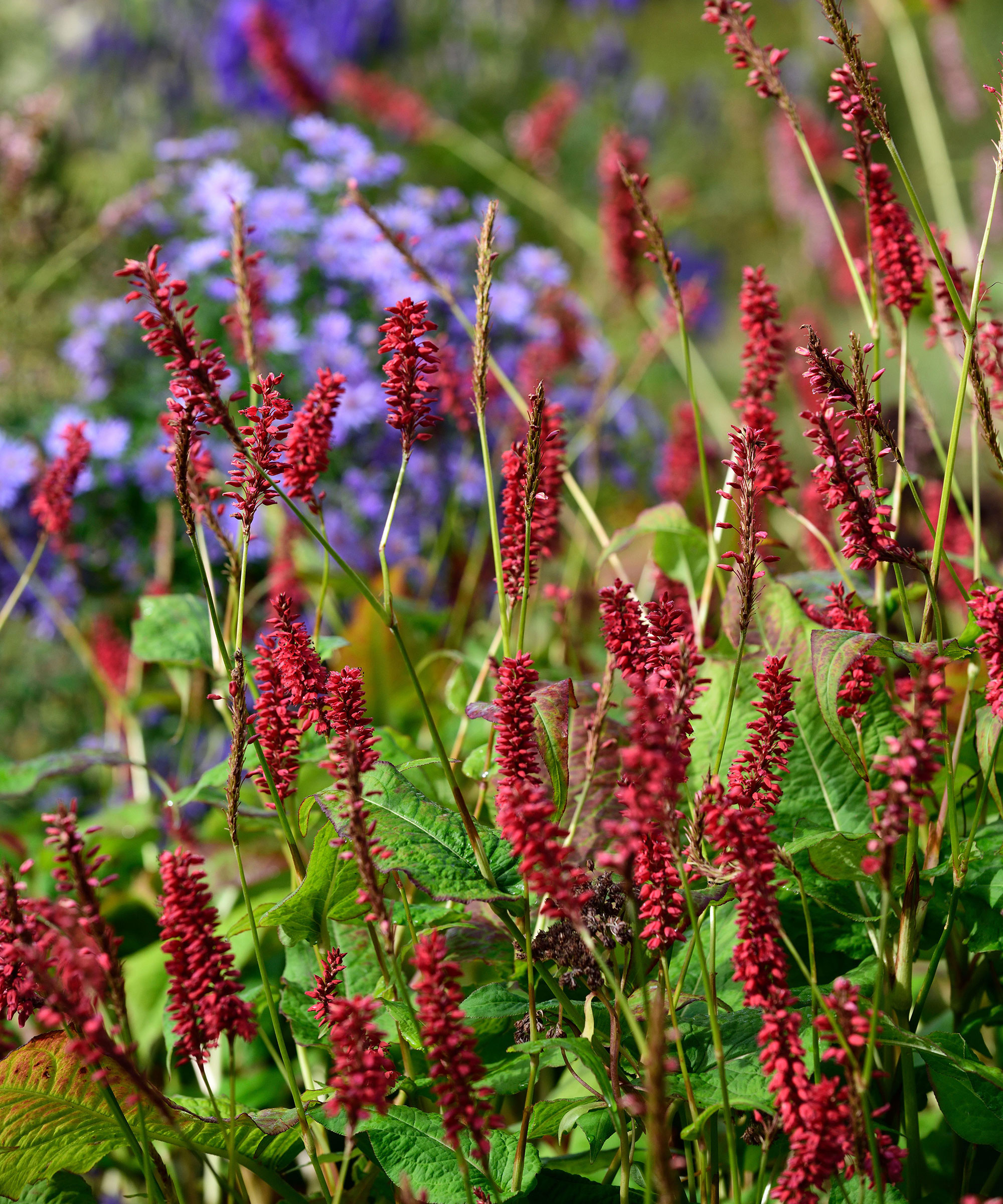
- Hardiness: USDA 4-7 (UK H7)
- Height: 4ft (1.2m)
- Spread: 2.5ft (75cm)
- Best for: Bold color
This upright, bushy bistort produces drama and impact with generous crimson candles of flowers that bloom from mid summer into mid to late fall, above a mound of large green leaves.
Grow in moisture-retentive soil in sun or semi-shade with Miscanthus sinensis ‘Elfin’ or other types of ornamental grass.
3. Persicaria amplexicaulis ‘Firetail’
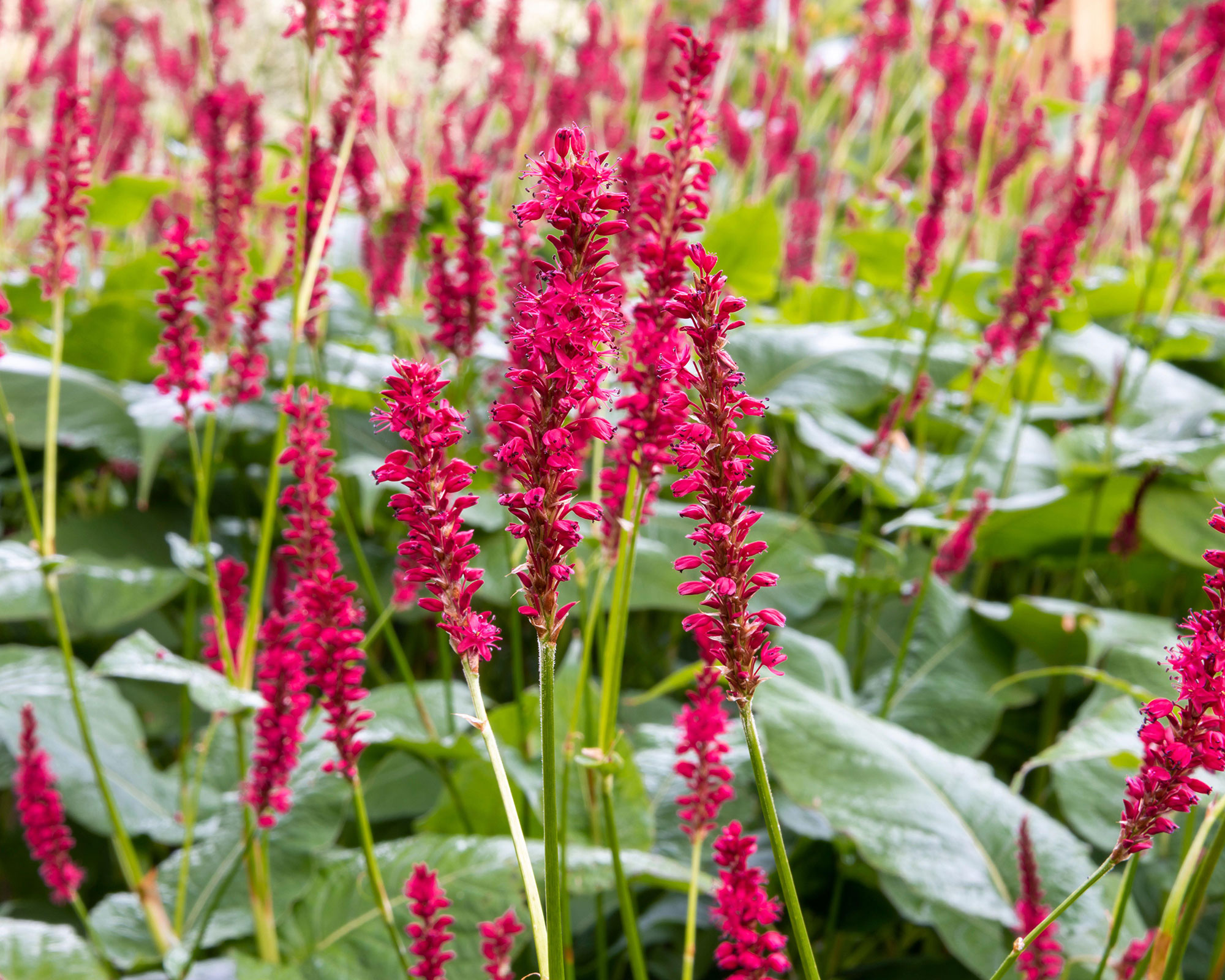
- Hardiness: USDA 4-7 (UK H7)
- Height: 4ft (1.2m)
- Spread: 4ft (1.2m)
- Best for: Prairie-style borders
'This stonking cultivar has erect, fiery crimson spires on tall stems over green-ribbed red-tipped foliage,' says Rona Dodds, owner of Quercus Garden Plants, which specialises in hardy plants. 'It flowers from midsummer until the frosts and will grow in poor soil.'
Pair with Helenium ‘Goldrausch’ or try other types of helenium in similar yellow or golden tones as a striking contrast.
4. Persicaria bistorta ‘Superba' AGM
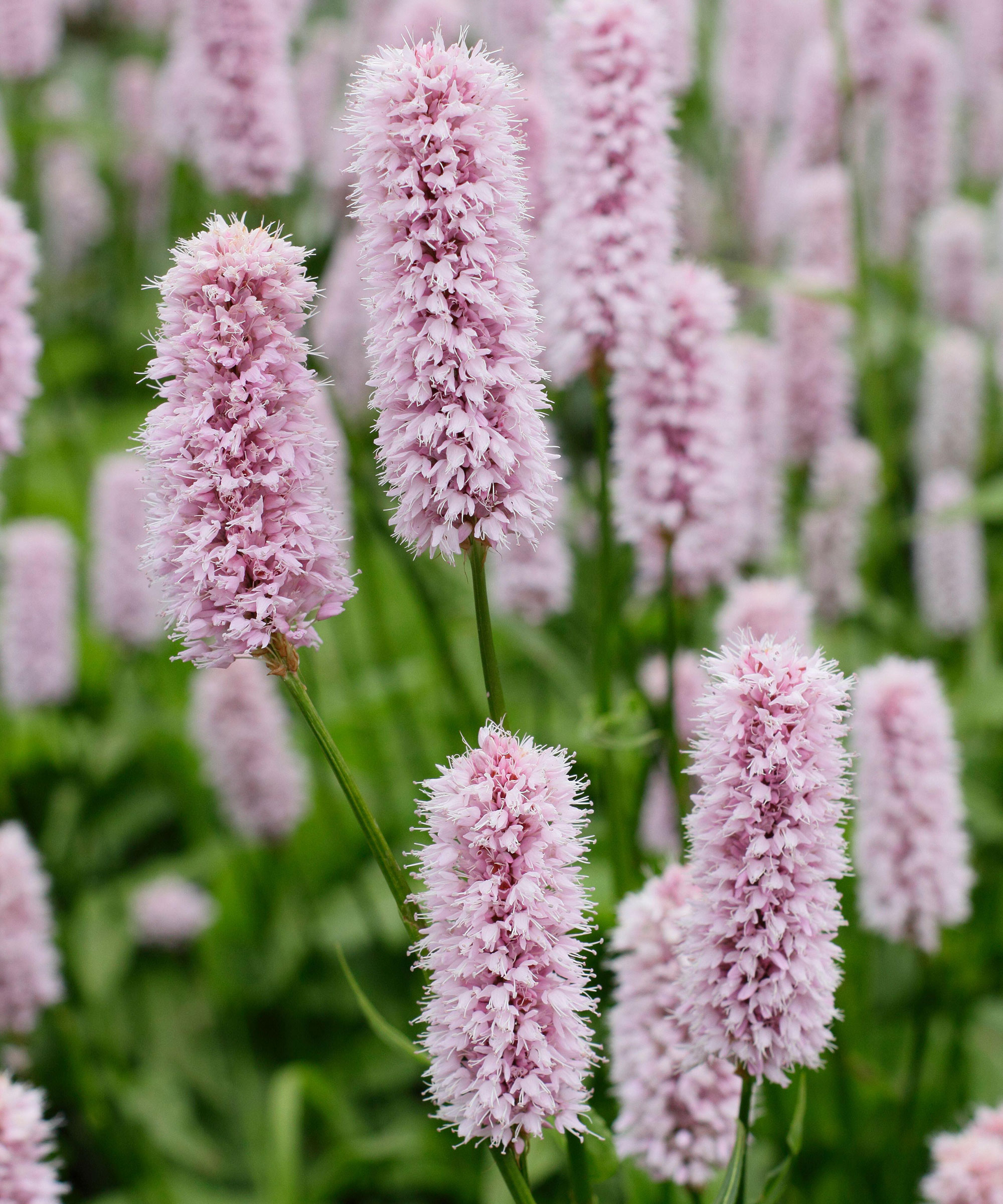
- Hardiness: USDA 3-7 (UK H7)
- Height: 3ft (90cm)
- Spread: 3ft (90cm)
- Best for: Moist soil
In late spring and early summer, this moisture-loving bistort is adorned with dense finger-like pink flowerheads, above oval semi-evergreen leaves.
In the right conditions, such as beside a stream or in bog gardens, it will spread. Pairs well with Thalictrum 'Black Stockings’, which has pink-purple blooms on dark stems.
5. Persicaria campanulata
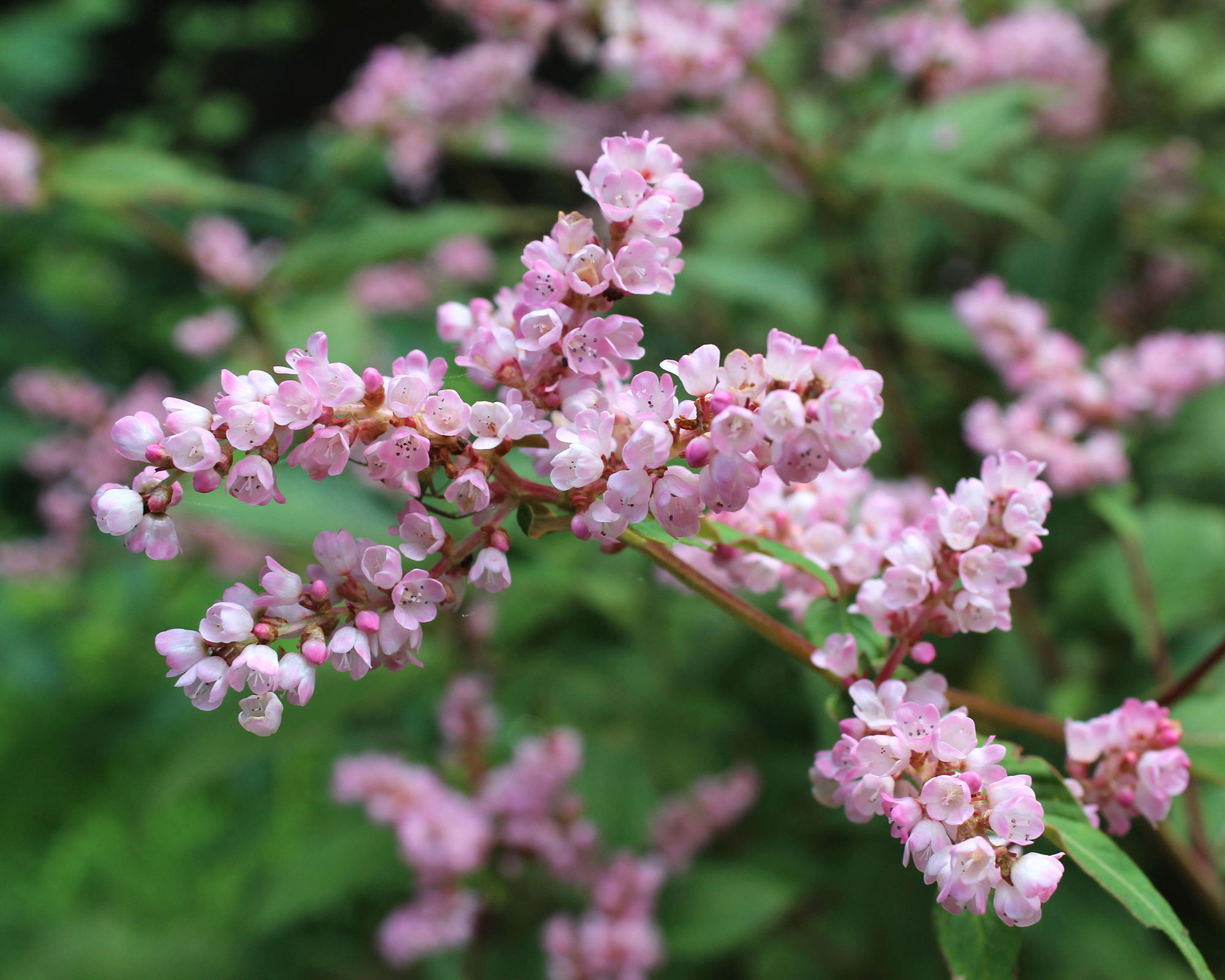
- Hardiness: USDA 5-9 (UK H7)
- Height: 3ft (90cm)
- Spread: 3ft (90cm)
- Best for: Woodland gardens
This unusual knotweed produces arching panicles of light-pink flowers from rose buds, above large ribbed green leaves, in late summer and early fall.
This is a good option if you're looking for woodland plants. It spreads, but is easy to control. Grow in rich moisture-retentive soil in semi-shade alongside pale-purple Veronicastrum virginicum ‘Fascination’.
6. Persicaria amplexicaulis ‘Rosea’

- Hardiness: USDA 4-7 (UK H7)
- Height: 3ft (90cm)
- Spread: 3ft (90cm)
- Best for: Layered planting
This variety of persicaria has numerous erect spikes of graceful, light-pink flowers that last for months.
Grow something colorful behind it that will shine through it. For instance, the New England aster Symphyotrichum novae-angliae 'Helen Picton’, which has purple flowers, or other types of aster featuring similar tones.
7. Persicaria alpina AGM (syn. P. polymorpha)

- Hardiness: USDA 4-9 (UK H6)
- Height: 7ft (2.1m)
- Spread: 5ft (1.5m)
- Best for: Shade
Tolerant of shade, the stout branching stems of Persicaria alpina are smothered in a mass of tiny cream flowers in summer, ageing to bronze pink in fall.
Tough, self-supporting, and non-invasive, it’s a great plant for the back of the border and acts as a pretty backdrop for other shade loving plants.
8. Persicaria amplexicaulis ‘Alba’
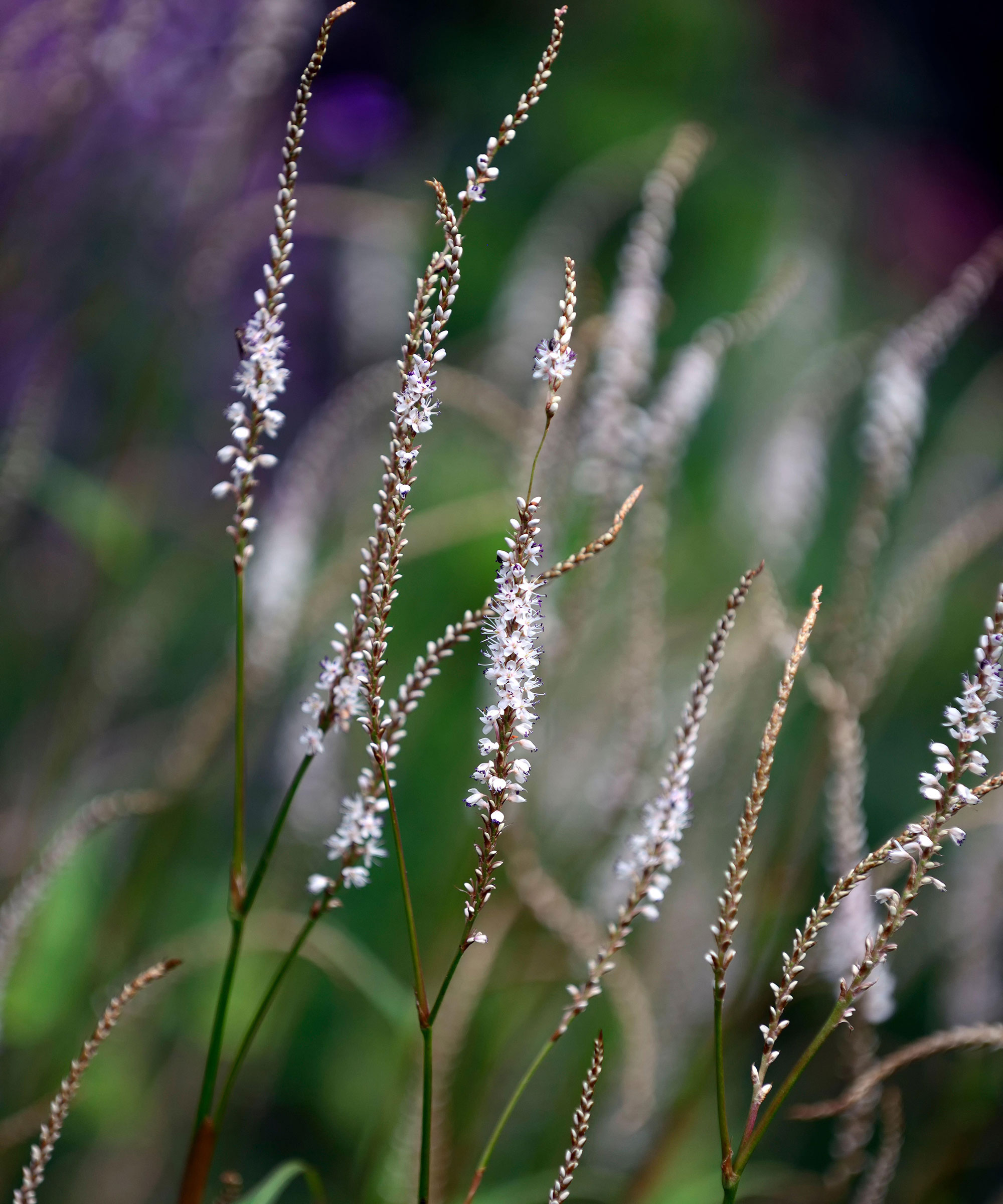
- Hardiness: USDA 4-7 (UK H7)
- Height: 3ft (90cm)
- Spread: 3ft (90cm)
- Best for: Elegant flowers
Persicaria amplexicaulis ‘Alba’ has delicate, wispy, often branched spires of pure-white flowers with tiny royal-purple stamens from July to the first frosts.
It is not as vigorous as some varieties, but is a beautiful addition to your low maintenance flowerbed ideas, growing well in sun or dappled shade and looking great paired with Echinops ritro 'Veitch's Blue’.
9. Persicaria amplexicaulis ‘White Eastfield’
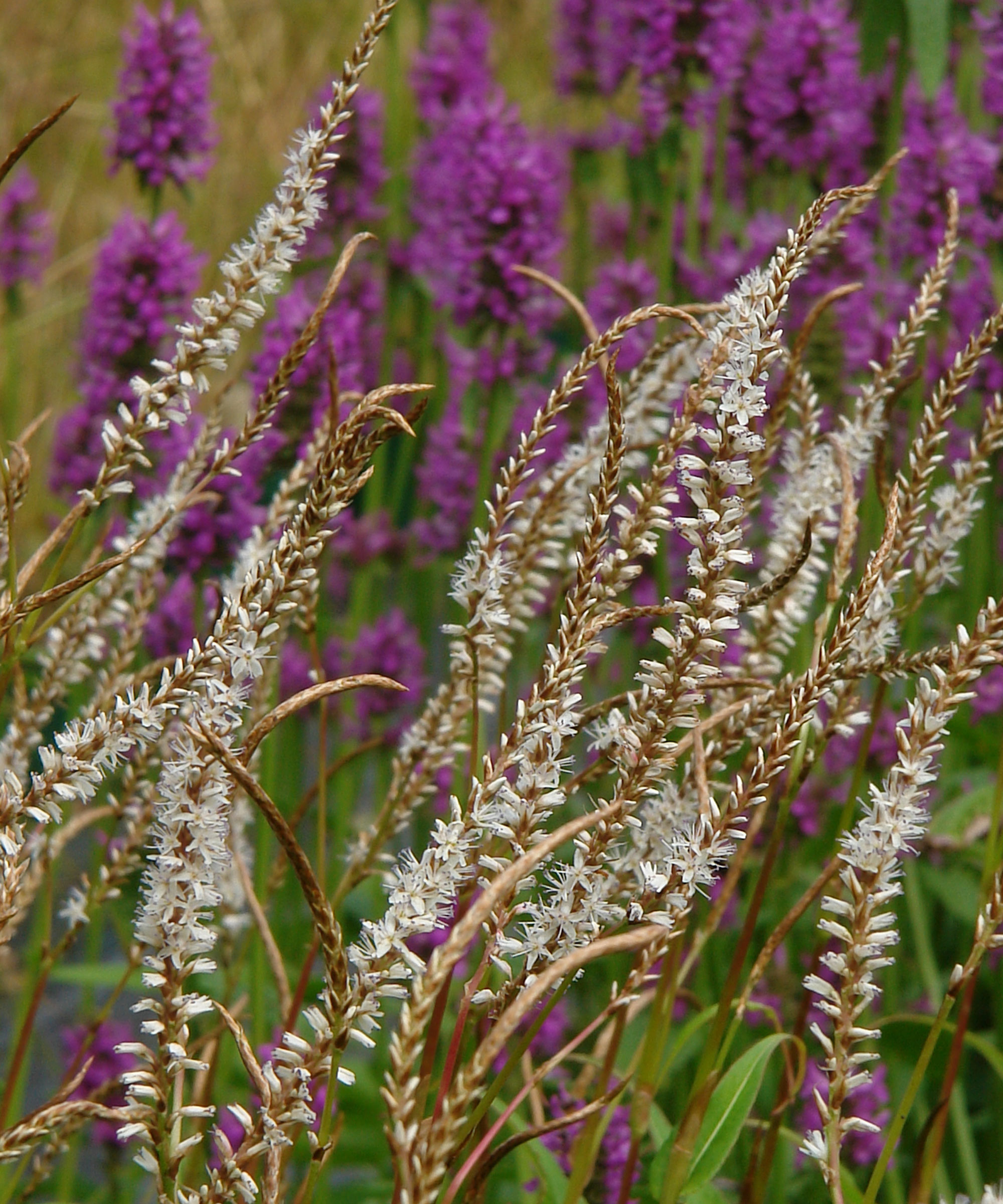
- Hardiness: USDA 4-7 (UK H7)
- Height: 3ft (90cm)
- Spread: 2ft (60cm)
- Best for: Airy flowers
This bistort produces tall, slender tapers of white flowers that float airily above narrow, pointy green leaves from midsummer into early fall, in sun or semi-shade.
Perennial expert Claire Austin combines this with Anthemis tinctoria 'E.C. Buxton’, which has primrose-yellow daisies.
10. Persicaria tenuicaulis
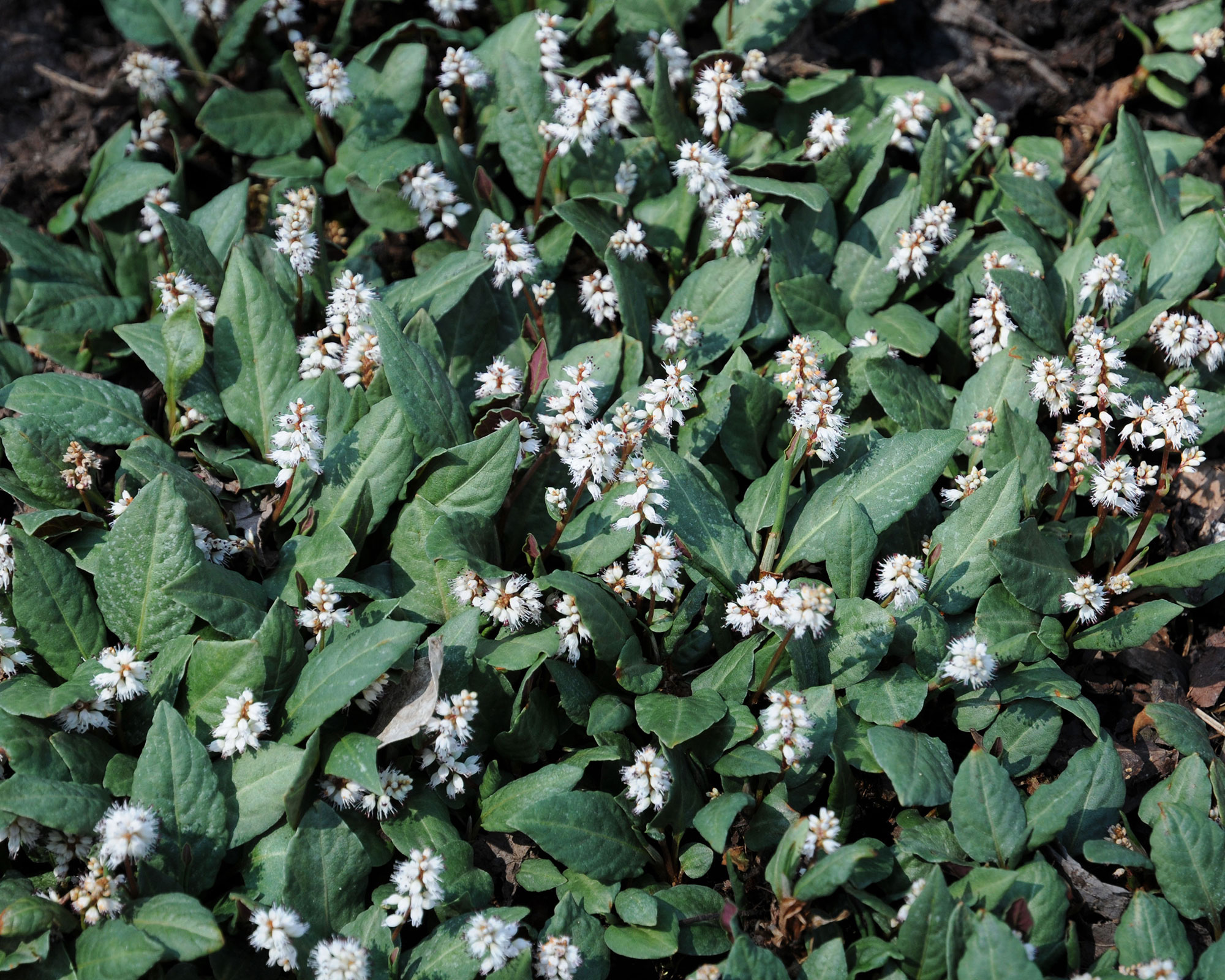
- Hardiness: USDA 5-8 (UK H7)
- Height: 6in (15cm)
- Spread: 20in (50cm)
- Best for: Growing on a bank
This lovely little Japanese species is a good low maintenance ground cover plant for moist, shady gardens.
From mid spring to mid summer, it produces fluffy thimbles of white flowers on burgundy stems above lance-shaped green leaves.
Plant alongside ivory-flowered Tiarella cordifolia in moisture-retentive soil in semi-shade or shade.
11. Persicaria vacciniifolia AGM
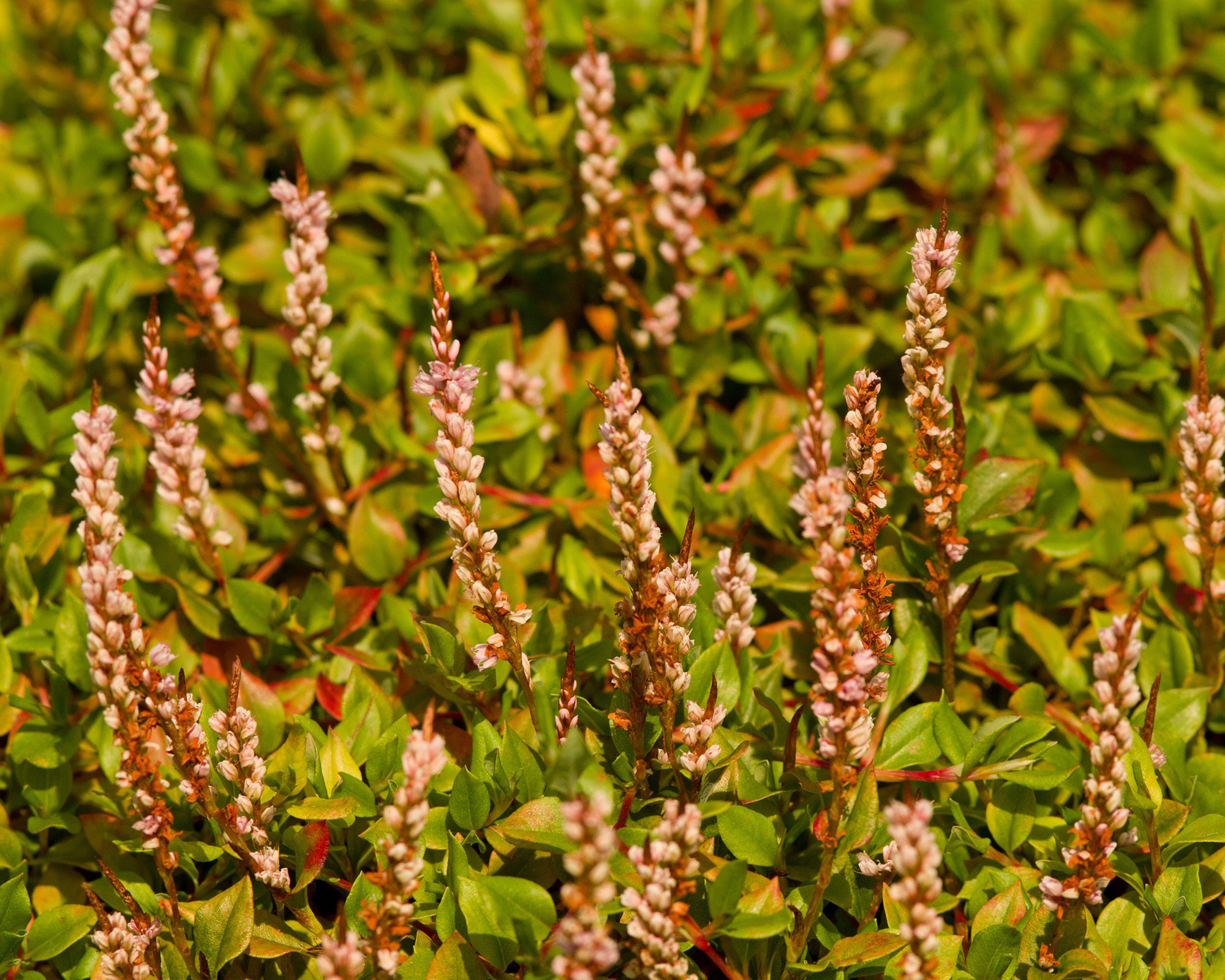
- Hardiness: USDA 4-7 (UK H7)
- Height: 12in (30cm)
- Spread: 5ft (1.5m)
- Best for: Paving edges
A great edging plant, the rock knotweed is a creeping perennial with leathery, glossy leaves on brick-red stems and spikes of soft-pink flowers in late summer and early fall.
Over winter, the bare fox-red stems endure. It prefers moisture retentive soil, but copes with most soils. Pair with Geranium 'Mavis Simpson’ in sun or semi-shade.
12. Persicaria affinis 'Donald Lowndes’ AGM
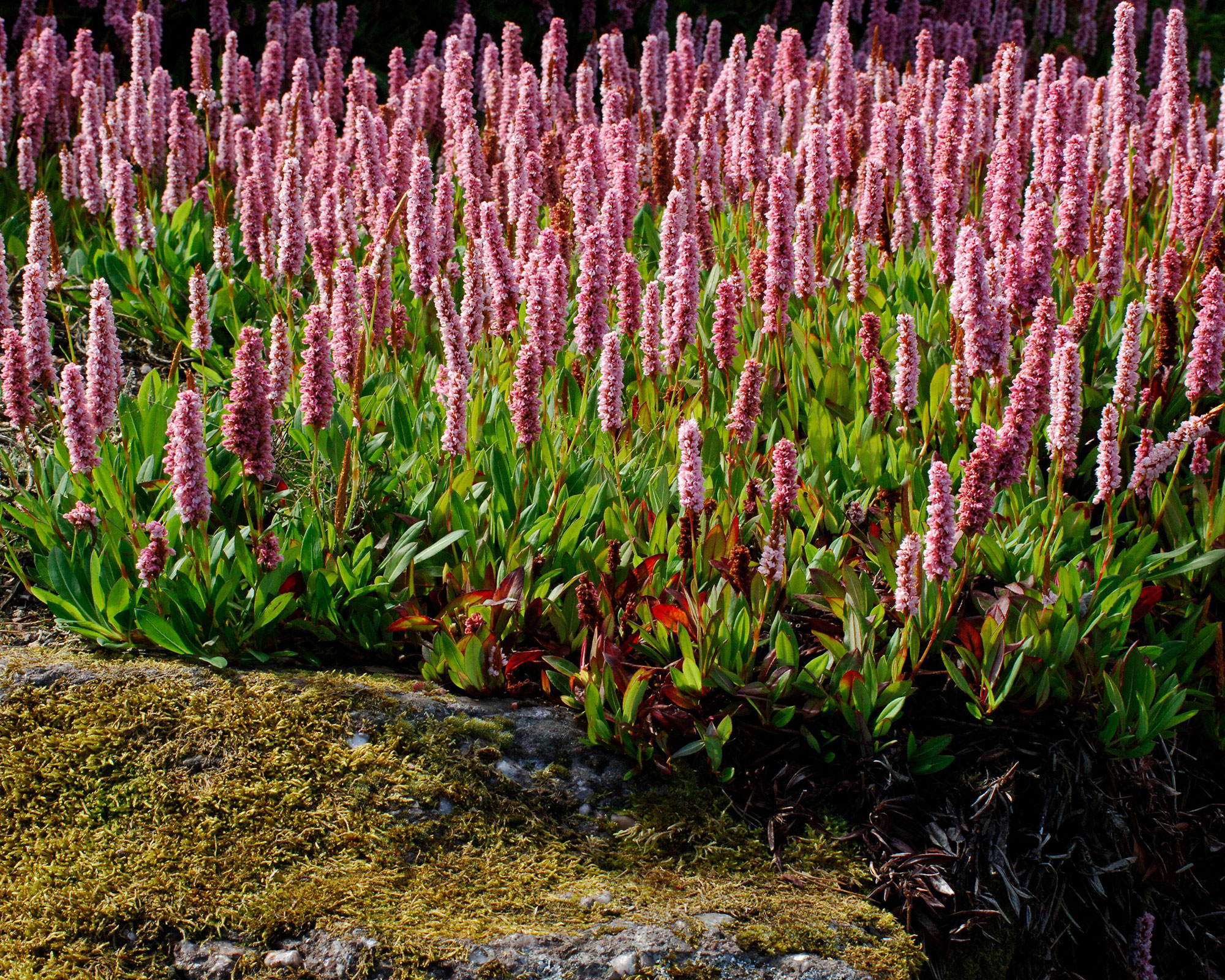
- Height: 8in (20cm)
- Spread: 3ft (90cm)
- Best for: Multi-colored flowers
This mat-forming knotweed produces short spikes of blush-pink flowers that become a richer pink as they age, creating a two-tone effect.
The green narrow leaves are semi-evergreen and take on red-brown tints over winter. Pair with silver painted lady ferns in retentive soil in sun or semi-shade.
13. Persicaria virginiana (Variegated Group) ‘Painter's Palette’

- Hardiness: USDA 5-8 (UK H6)
- Height: 3ft (90cm)
- Spread: 2ft (60cm)
- Best for: Variegated leaves
The cream and green marbled leaves are marked with a brown-red V line. Since the bronze flowers are nothing to write home about, this is grown primarily for its striking foliage.
The late gardener Beth Chatto planted it alongside cranesbills and other cottage garden plants in moist semi-shade.
14. Persicaria microcephala 'Red Dragon’

- Hardiness: USDA 6-8 (UK H5)
- Height: 20in (50cm)
- Spread: 31in (80cm)
- Best for: Red foliage
The lance-shaped leaves of this knotweed are burgundy-red with a silver chevron in spring, before taking on green tones later in the season, when they are paired with white flowers.
This variety is not invasive like the species, but will still spread. Grow in semi-shade alongside the many varieties of ferns available.
15. Persicaria virginiana var. filiformis 'Compton's Red’ (syn. 'Compton's Form’)
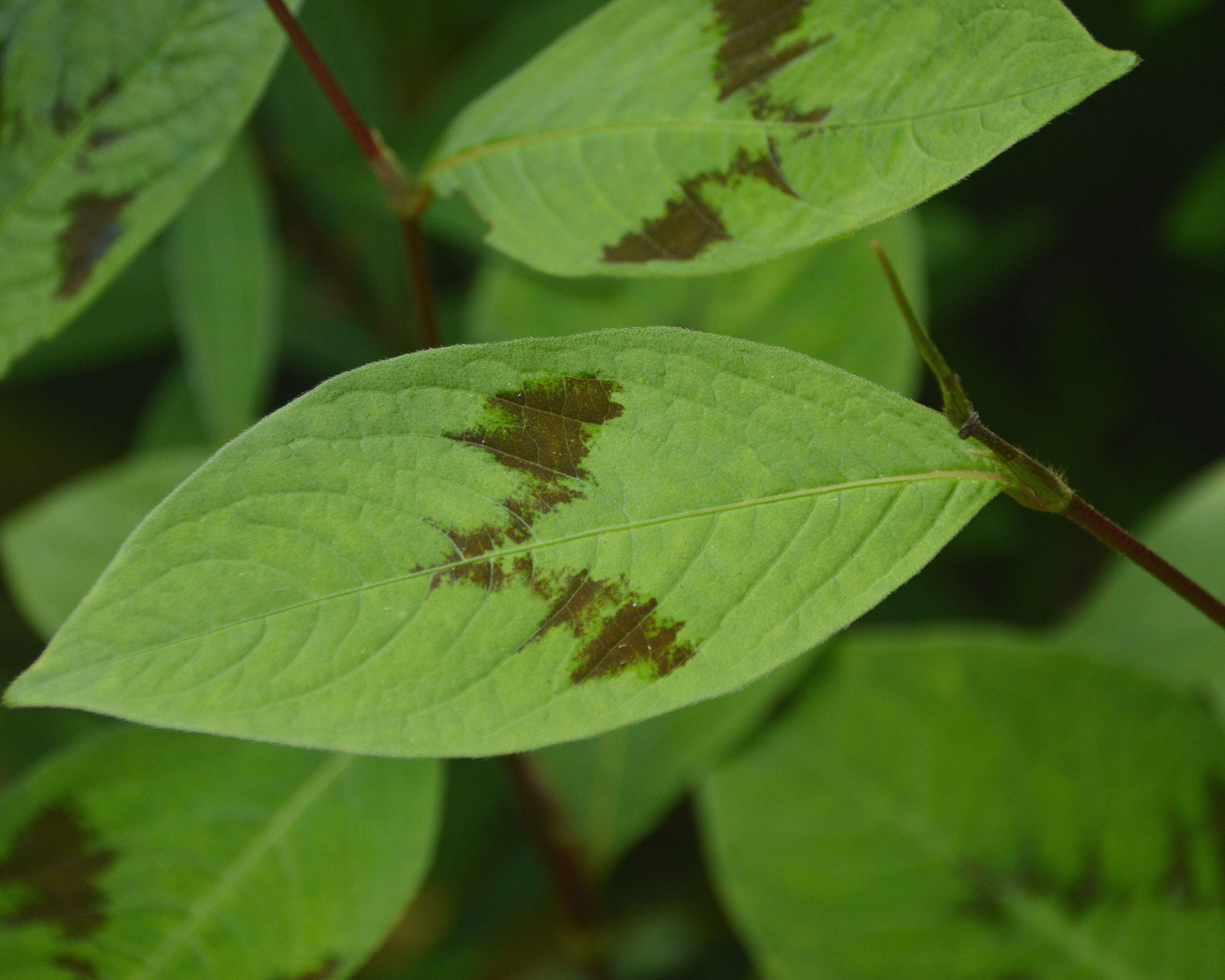
- Hardiness: USDA 5-8 (UK H6)
- Height: 3ft (90cm)
- Spread: 2ft (60cm)
- Best for: Contemporary gardens
In spring, the narrow oval foliage emerges red with a maroon chevron, but takes on olive-green and bronze tones in summer.
For modern gardens, pair with ruby-flowered Crocosmia ‘Hellfire' in well-drained retentive soil in semi-shade.
16. Persicaria amplexicaulis 'Golden Arrow'
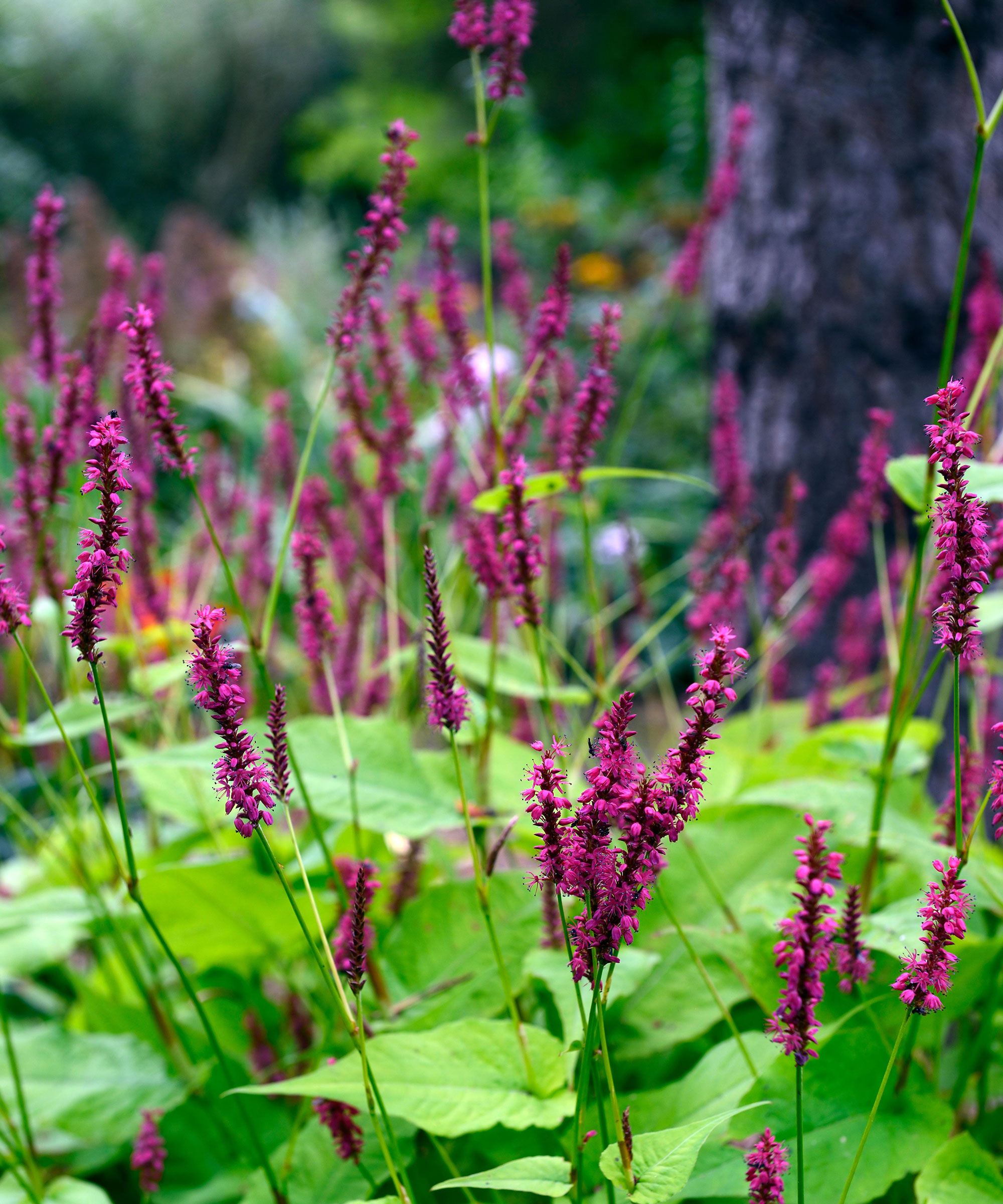
- Hardiness: USDA 4-7 (UK H7)
- Height: 3ft (90cm)
- Spread: 2ft (60cm)
- Best for: Brightening a shady corner
This bistort has superb lime-yellow arrow-shaped leaves that are paired with thin raspberry-red flower tapers in late summer and early fall.
Avoid planting in full sun to achieve the best leaf color. Pair with scarlet-flowered Lobelia cardinalis 'Queen Victoria’ in moist soil in semi-shade.
What's the best type of persicaria for my garden?
The best variety of persicaria for a border is P. amplexicaulis, which reaches around 3ft (90cm). Its cultivars (such as ‘Firetail’) are some of the most fashionable plants favoured by garden designer and ‘prairie-king’ Piet Oudolf for their prairie-style habit of flowering over a long period in a wide range of conditions and pairing well with grasses.
'Of all the perennials that we grow alongside our grasses, P. amplexicaulis is a top favorite,' says Neil Lucas, owner of the Knoll Gardens nursery in Dorset, UK, which specialises in grasses and perennials.
'The linear lines of the grasses combine so beautifully with persicaria’s healthy clumps of wide green foliage and upright pointing flowers in a variety of colors. There are so many combinations to choose from, but ‘Rosea’ always works well with Molinia caerulea.'
For a bog garden or a border with consistently moist soil, forms of P. bistorta (such as 'Hohe Tatra’) are superb. And in a large garden or a wild area, cream-flowered P. alpina (syn. P. polymorpha) is a gorgeous giant, capable of 7ft (2m), and the shorter pale-pink P. campanulata provides great ground cover, spreading with vigor but very easy to remove when necessary.
Court the right types of persicaria, and they will fill the garden with color for months year after year.

How tall do most varieties of persicaria grow?
They range in size, from the low mat-forming P. vacciniifolia (which grows to 12in/30cm tall and 5ft/1.5m wide) to the huge P. alpina, which can reach 7ft (2.1m).
The popular P. amplexicaulis varieties are great plants for the middle of the border, reaching around 3ft (90cm) tall.
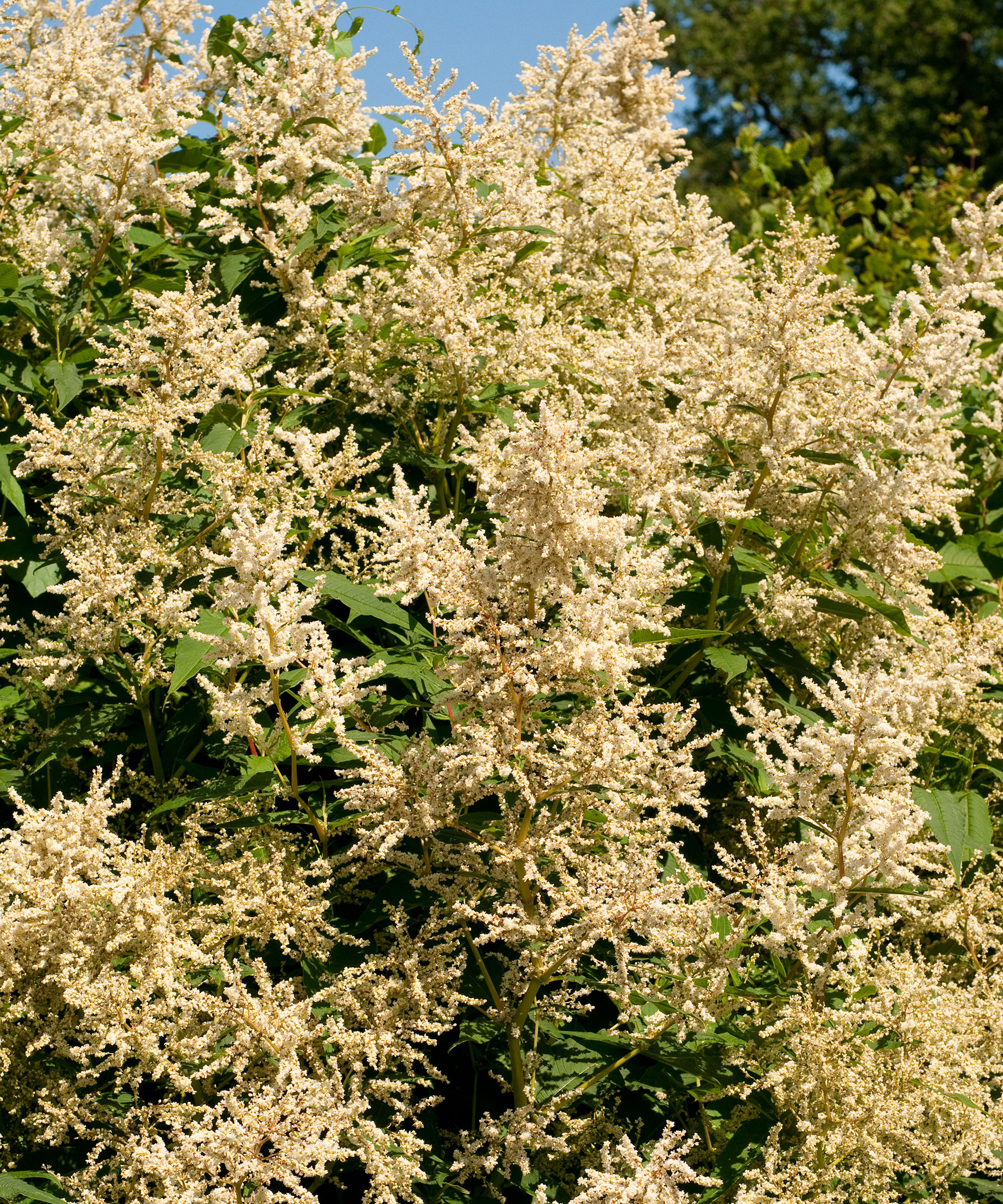
Is persicaria a knotweed?
The genus persicaria includes knotweeds (such as P. alpina and P. campanulata) and bistorts (such as P. amplexicaulis and P. bistorta).
These plants have gone through a series of confusing categorisation changes. For example, they used to be in the same bracket as the highly invasive Japanese knotweed, which now belongs to a different genus: Fallopia.
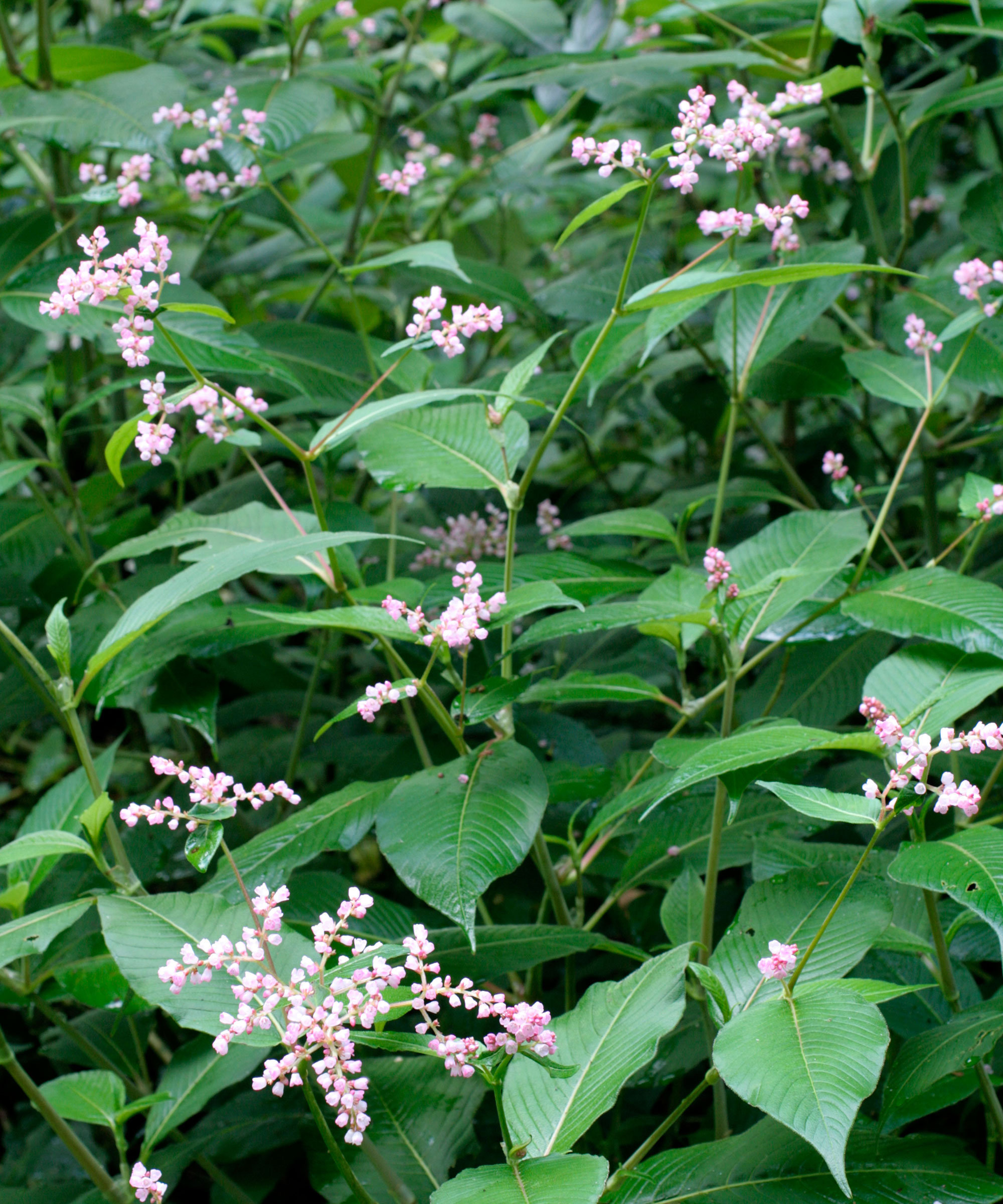
Are any persicaria varieties considered to be invasive?
Yes! It’s best to avoid P. wallichii (Himalayan knotweed) and P. runcinata entirely, since their vigor is extreme and they can therefore be considered invasive plants.
In a small garden, P. campanulata and P. bistorta can be too rampant, although it is fairly easy to restrict their growth by pulling out what you don’t want.
Where to buy persicaria
Ready to start adding long lasting color to your planting scheme? Follow our quick links to shop direct with leading suppliers in both the US and UK.
Shop for persicaria varieties in the US:
Shop for persicaria varieties in the UK:

Ruth is the gardening editor of Amateur Gardening magazine and spends her working days carrying out, writing about and photographing the tasks the readers should be carrying out each week, as well as testing many of the new products that arrive on the gardening market. She is horticulturally trained, with a qualification from the Royal Horticultural Society.
